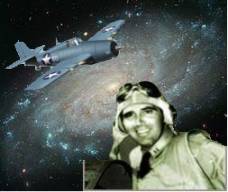EDWARD “BUTCH” O’HARE
AND THE
LIGHTNING FROM LEXINGTON
On the day when America most needed a champion, this was a strange place to find one. Spoiled, mischievous and undisciplined, the child of a broken home, and the son of a mobster, nobody ever expected him to be or to do anything outstanding. But when all seemed lost and hopeless, during four decisive minutes of mortal combat, facing overwhelming odds, when imminent disaster providentially turned into overwhelming victory, the nation discovered to its amazement the hidden hero that lived inside of Edward Henry “Butch” O’Hare.
 .His father, Edward O’Hare Sr., called E. J. by his family, was born on September 15, 1893 to Irish American parents Patrick Joseph and Cecelia Malloy O’Hare and was later known by the nickname “Easy Eddie.” E. J. grew up to marry Selma Anne Lauth of St. Louis on June 4, 1912. Family life began modestly, living in an apartment above the grocery store of Selma’s father with their three children, Edward, born in 1914, Patricia, born in 1919, and Marilyn, born in 1924.
.His father, Edward O’Hare Sr., called E. J. by his family, was born on September 15, 1893 to Irish American parents Patrick Joseph and Cecelia Malloy O’Hare and was later known by the nickname “Easy Eddie.” E. J. grew up to marry Selma Anne Lauth of St. Louis on June 4, 1912. Family life began modestly, living in an apartment above the grocery store of Selma’s father with their three children, Edward, born in 1914, Patricia, born in 1919, and Marilyn, born in 1924.
 E. J. managed to put himself through law school and joined a law firm after passing his bar exam in 1923. Success as a lawyer came quickly. Among other things, E.J. represented a successful inventor named Owen P. Smith who patented a mechanical rabbit device used in dog racing. E. J. bought the rights and used the new invention in his own dog racing business. The business boomed and income flourished. The family moved into a new home in a neighborhood named Holly Hills in St. Louis where they built a swimming pool and were able to purchase a family car. Unfortunately, E. J.’s family was not doing as well as his law practice.
E. J. managed to put himself through law school and joined a law firm after passing his bar exam in 1923. Success as a lawyer came quickly. Among other things, E.J. represented a successful inventor named Owen P. Smith who patented a mechanical rabbit device used in dog racing. E. J. bought the rights and used the new invention in his own dog racing business. The business boomed and income flourished. The family moved into a new home in a neighborhood named Holly Hills in St. Louis where they built a swimming pool and were able to purchase a family car. Unfortunately, E. J.’s family was not doing as well as his law practice.
 E. J. felt very devoted to his son Edward, but saw him as lazy and undisciplined. Edward was overeating and had a weight problem. One busy day, as the father hurried home from work for a quick lunch to rush back to his job, he was appalled to see his son Edward sprawled out on the couch, reading books and stuffing sweet rolls into his mouth. Shortly thereafter the boy asked his father to borrow the family car to go next door to the bakery and buy doughnuts. Why? Too far to walk? That was it! E. J. had to do something for his son, or there was no telling what he would turn into. E. J. promptly enrolled his son Edward at Western Military Academy in Alton, Illinois where Edward studied from eighth grade until he graduated from high school in 1932. He never excelled in academics or in sports but was excellent as a marksman and became president of the rifle club.
E. J. felt very devoted to his son Edward, but saw him as lazy and undisciplined. Edward was overeating and had a weight problem. One busy day, as the father hurried home from work for a quick lunch to rush back to his job, he was appalled to see his son Edward sprawled out on the couch, reading books and stuffing sweet rolls into his mouth. Shortly thereafter the boy asked his father to borrow the family car to go next door to the bakery and buy doughnuts. Why? Too far to walk? That was it! E. J. had to do something for his son, or there was no telling what he would turn into. E. J. promptly enrolled his son Edward at Western Military Academy in Alton, Illinois where Edward studied from eighth grade until he graduated from high school in 1932. He never excelled in academics or in sports but was excellent as a marksman and became president of the rifle club.
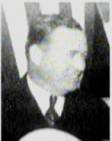
 About the time that young Edward went off to school his parents divorced. His mother Selma kept his two sisters, Patricia and Maryland, and his father, E. J., moved to Chicago where he continued the business he knew of horse racing and dog racing and continued to support his family well. E. J. thought he needed to align himself with a gang for his own protection. He began a romantic relationship with Mary Sue Granata, the sister of a state representative with ties to Al Capone and his mob, who ruled the streets of Chicago at the time.
About the time that young Edward went off to school his parents divorced. His mother Selma kept his two sisters, Patricia and Maryland, and his father, E. J., moved to Chicago where he continued the business he knew of horse racing and dog racing and continued to support his family well. E. J. thought he needed to align himself with a gang for his own protection. He began a romantic relationship with Mary Sue Granata, the sister of a state representative with ties to Al Capone and his mob, who ruled the streets of Chicago at the time.
 E. J. was just the man Al Capone needed. Their mutual interest in dog and horse racing brought them together, and E. J. became Capone’s business manager. But that was just the start. As America’s most notorious mob leader with an empire in bootlegged booze and prostitution, Capone needed a lawyer working full time to keep him out of jail, and E. J. proved himself very capable. Having proved his worth, Capone rewarded E.J. with lots of cash and a fenced-in residence that filled an entire city block in Chicago.
E. J. was just the man Al Capone needed. Their mutual interest in dog and horse racing brought them together, and E. J. became Capone’s business manager. But that was just the start. As America’s most notorious mob leader with an empire in bootlegged booze and prostitution, Capone needed a lawyer working full time to keep him out of jail, and E. J. proved himself very capable. Having proved his worth, Capone rewarded E.J. with lots of cash and a fenced-in residence that filled an entire city block in Chicago.
 But while E. J.’s business was booming his conscience was busting. He was still very devoted to his son, Edward, in military school. He had been trying to teach his son the difference between right and wrong. E. J. wanted his son to be a better person than he was himself but could not give him a good name or a good example. What if Edward learned what his father was doing? Would he want to be like his dad? The last straw may have been the Valentine’s Day Massacre on February 14, 1929 when seven men from the North Side Gang, Capone’s rival mob, were lined up and machine-gunned down. And it was E. J. that was keeping Capone out of jail so he could kill more people!
But while E. J.’s business was booming his conscience was busting. He was still very devoted to his son, Edward, in military school. He had been trying to teach his son the difference between right and wrong. E. J. wanted his son to be a better person than he was himself but could not give him a good name or a good example. What if Edward learned what his father was doing? Would he want to be like his dad? The last straw may have been the Valentine’s Day Massacre on February 14, 1929 when seven men from the North Side Gang, Capone’s rival mob, were lined up and machine-gunned down. And it was E. J. that was keeping Capone out of jail so he could kill more people!
 E. J. asked the help of John Rodgers, a reporter with the St. Louis Post-Dispatch, to arrange a meeting with the IRS. In a secret meeting with Frank J. Wilson, an investigator with the treasury department, E. J. agreed to be an undercover informant and turned over financial records of Al Capone, which resulted in his arrest for income tax evasion. He also helped crack the code in Capone’s ledgers for gambling houses throughout the 1920’s. It was also E. J. who alerted the government that Capone, after his arrest, had fixed his jury, so the judge and jury were changed. He became a key witness in the trial, which resulted in the conviction of Capone on 5 of 22 counts for which he was sentenced to 11 years in prison at Alcatraz where he arrived in 1933.
E. J. asked the help of John Rodgers, a reporter with the St. Louis Post-Dispatch, to arrange a meeting with the IRS. In a secret meeting with Frank J. Wilson, an investigator with the treasury department, E. J. agreed to be an undercover informant and turned over financial records of Al Capone, which resulted in his arrest for income tax evasion. He also helped crack the code in Capone’s ledgers for gambling houses throughout the 1920’s. It was also E. J. who alerted the government that Capone, after his arrest, had fixed his jury, so the judge and jury were changed. He became a key witness in the trial, which resulted in the conviction of Capone on 5 of 22 counts for which he was sentenced to 11 years in prison at Alcatraz where he arrived in 1933.
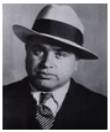
 But the mob had always paid E. J. well, and there was one more payment to make. Payday was November 8, 1939, just one week before Al Capone was scheduled for early release from prison due to declining health. E. J. must have known that his severance pay was on its way. His friends say that as he left his office at the Sportsman’s racetrack that day he carried a semi-automatic pistol – very unusual for E. J. As he approached an intersection on his way home a dark sedan pulled up beside his car. Two gunmen blasted him with big-game shotgun slugs, and then, before anyone knew what was happening, the hit car sped away and lost itself in traffic. The assassins were never found. Several months later Frank Nitti, Capone’s second in command, married Ursula Sue Granata, E. J.’s fiancée of several years whom he could not marry in the Catholic Church because of his divorce.
But the mob had always paid E. J. well, and there was one more payment to make. Payday was November 8, 1939, just one week before Al Capone was scheduled for early release from prison due to declining health. E. J. must have known that his severance pay was on its way. His friends say that as he left his office at the Sportsman’s racetrack that day he carried a semi-automatic pistol – very unusual for E. J. As he approached an intersection on his way home a dark sedan pulled up beside his car. Two gunmen blasted him with big-game shotgun slugs, and then, before anyone knew what was happening, the hit car sped away and lost itself in traffic. The assassins were never found. Several months later Frank Nitti, Capone’s second in command, married Ursula Sue Granata, E. J.’s fiancée of several years whom he could not marry in the Catholic Church because of his divorce.
 The newspapers, ignoring his heroic efforts that finally put Capone out of circulation, made good use of the story, calling E. J., “Al Capone’s billionaire front man.” These stories were a hardship on E. J.’s surviving family, even his two daughters who were pushed out of the school they were attending because some parents at the school said they didn’t want their daughters attending school beside the daughters of a mobster. Some speculated that the real reason why E. J. cooperated with authorities is because police were already closing in on Capone and would have put E. J. away too if he hadn’t cut a deal. But Frank J. Wilson, the treasury inspector with whom E. J. had worked undercover, tells the story differently. In 1947 Wilson published an article in Collier’s Magazine called, “The Undercover Man: He Trapped Capone.” There he said of E. J., “On the inside of the gang I had the best undercover man I had ever know: Edward O’Hare.”
The newspapers, ignoring his heroic efforts that finally put Capone out of circulation, made good use of the story, calling E. J., “Al Capone’s billionaire front man.” These stories were a hardship on E. J.’s surviving family, even his two daughters who were pushed out of the school they were attending because some parents at the school said they didn’t want their daughters attending school beside the daughters of a mobster. Some speculated that the real reason why E. J. cooperated with authorities is because police were already closing in on Capone and would have put E. J. away too if he hadn’t cut a deal. But Frank J. Wilson, the treasury inspector with whom E. J. had worked undercover, tells the story differently. In 1947 Wilson published an article in Collier’s Magazine called, “The Undercover Man: He Trapped Capone.” There he said of E. J., “On the inside of the gang I had the best undercover man I had ever know: Edward O’Hare.”
 E. J. had encouraged his son Edward to pursue a military career. He was granted an appointment and applied in 1937 to Annapolis Naval Academy in Maryland. Though a bit overweight, Edward did pass the physical, but only passed the academic test after the second try. He did well at the Academy, but nothing outstanding. It was there that he was first called “Butch” by his peers, and thereafter insisted that everyone, including his subordinates, called him by his nickname. Butch was loved and respected by his friends, but was occasionally known to break the rules for a little fun.
E. J. had encouraged his son Edward to pursue a military career. He was granted an appointment and applied in 1937 to Annapolis Naval Academy in Maryland. Though a bit overweight, Edward did pass the physical, but only passed the academic test after the second try. He did well at the Academy, but nothing outstanding. It was there that he was first called “Butch” by his peers, and thereafter insisted that everyone, including his subordinates, called him by his nickname. Butch was loved and respected by his friends, but was occasionally known to break the rules for a little fun.
 Graduation came in 1937. Butch had been interested in flying for quite some time and had even been taken to fly with Charles Lindberg. As soon as he completed the mandatory two years on a surface war ship, the USS Mexico, Butch followed his true passion in flight school where he was struck by the news of his father’s assassination. First there was the basic training in the Sherman biplane. Training was completed in 1940 on patrol planes and advanced land planes. Butch was assigned duty aboard the aircraft carrier USS Saratoga under the command of Jimmy Thatch who was famous for developing maneuvers by which the American navy Wildcat fighters could counter the superior speed and maneuverability of the Japanese zero. Thatch mentored Butch closely and soon recognized him as one of a kind with a unique combination of mental, physical, and personal attributes that made him perfect for flying and an outstanding pilot.
Graduation came in 1937. Butch had been interested in flying for quite some time and had even been taken to fly with Charles Lindberg. As soon as he completed the mandatory two years on a surface war ship, the USS Mexico, Butch followed his true passion in flight school where he was struck by the news of his father’s assassination. First there was the basic training in the Sherman biplane. Training was completed in 1940 on patrol planes and advanced land planes. Butch was assigned duty aboard the aircraft carrier USS Saratoga under the command of Jimmy Thatch who was famous for developing maneuvers by which the American navy Wildcat fighters could counter the superior speed and maneuverability of the Japanese zero. Thatch mentored Butch closely and soon recognized him as one of a kind with a unique combination of mental, physical, and personal attributes that made him perfect for flying and an outstanding pilot.
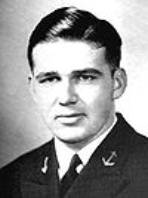
 In the summer of 1941 Butch met a nurse named Rita Wooster. He knew instantly that she was just the one he had been looking for and proposed the same day he met her. They were married on September 6, just six weeks later. They sailed to their Hawaiian honeymoon on two different ships, Rita on a passenger liner, and Butch on the USS Saratoga. Later, in February of 1943, their daughter Kathy was born. Unfortunately, she would not remember her father.
In the summer of 1941 Butch met a nurse named Rita Wooster. He knew instantly that she was just the one he had been looking for and proposed the same day he met her. They were married on September 6, just six weeks later. They sailed to their Hawaiian honeymoon on two different ships, Rita on a passenger liner, and Butch on the USS Saratoga. Later, in February of 1943, their daughter Kathy was born. Unfortunately, she would not remember her father.
 Then, just three months after their marriage, war broke out with the Japanese attack on Pearl Harbor. Butch shipped out the next day. The USS Saratoga, on which Butch had served previously, escaped the carnage of Pearl Harbor by being in homeport for upkeep. He, along with his Third Squadron, was reassigned to the aircraft carrier USS Lexington. That’s where the excitement began. For the first few weeks of the war all the news was bad. Japan, which had been preparing for war, was doing its utmost to push the US navy through a meat grinder in an effort to exterminate it before American industry could bring its military up to par. The people needed some good news. America needed a hero – someone who could prove that the enemy could be vanquished. That champion was about to emerge out of obscurity in a very unlikely person.
Then, just three months after their marriage, war broke out with the Japanese attack on Pearl Harbor. Butch shipped out the next day. The USS Saratoga, on which Butch had served previously, escaped the carnage of Pearl Harbor by being in homeport for upkeep. He, along with his Third Squadron, was reassigned to the aircraft carrier USS Lexington. That’s where the excitement began. For the first few weeks of the war all the news was bad. Japan, which had been preparing for war, was doing its utmost to push the US navy through a meat grinder in an effort to exterminate it before American industry could bring its military up to par. The people needed some good news. America needed a hero – someone who could prove that the enemy could be vanquished. That champion was about to emerge out of obscurity in a very unlikely person.
 It was February 20, 1942, just six weeks after the beginning of the war. The USS Lexington was enroot to engage the Japanese fleet at Rabaal, New Britain off the Solomon Islands. The Navy Wildcat planes, the best available at the beginning of the war, were woefully inadequate in quality and in number to face the vastly superior Japanese Zero fighters and “Betty” bombers. And the inexperienced pilots, many, like Butch, fresh out of flight training, were no match for the veteran Japanese pilots. But the Navy had to make do. There was no other alternative.Somehow they had to hold off the Japanese juggernaut till American industry could equip the military. Everything depended on a miracle – from somewhere.
It was February 20, 1942, just six weeks after the beginning of the war. The USS Lexington was enroot to engage the Japanese fleet at Rabaal, New Britain off the Solomon Islands. The Navy Wildcat planes, the best available at the beginning of the war, were woefully inadequate in quality and in number to face the vastly superior Japanese Zero fighters and “Betty” bombers. And the inexperienced pilots, many, like Butch, fresh out of flight training, were no match for the veteran Japanese pilots. But the Navy had to make do. There was no other alternative.Somehow they had to hold off the Japanese juggernaut till American industry could equip the military. Everything depended on a miracle – from somewhere.
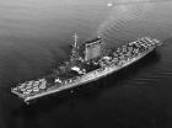
 Ship radar detected a wave of Japanese aircraft approaching to attack the Lexington. There was no time to lose. Six Wildcat fighters were scrambled to engage them. Just after launching, Butch O’Hare noticed to his horror that someone had neglected to top off his fuel tank. He didn’t have enough fuel to engage the enemy and return. There was nothing anyone could do. His commander ordered him back to the carrier. Reluctantly, Butch withdrew from formation. Suddenly, Butch spotted a much greater disaster: a formation of eight Japanese Betty bombers closing in fast on the carrier. No time to launch more planes. No time for the other Wildcats already in the air to return. Only Butch and his wingman were close enough to engage, outnumbered eight to two.
Ship radar detected a wave of Japanese aircraft approaching to attack the Lexington. There was no time to lose. Six Wildcat fighters were scrambled to engage them. Just after launching, Butch O’Hare noticed to his horror that someone had neglected to top off his fuel tank. He didn’t have enough fuel to engage the enemy and return. There was nothing anyone could do. His commander ordered him back to the carrier. Reluctantly, Butch withdrew from formation. Suddenly, Butch spotted a much greater disaster: a formation of eight Japanese Betty bombers closing in fast on the carrier. No time to launch more planes. No time for the other Wildcats already in the air to return. Only Butch and his wingman were close enough to engage, outnumbered eight to two.
 Then, as though the situation was not already hopeless enough, the guns on the plane of Butch’s wingman jammed! Butch would have to face the Japanese Bettys alone, outnumbered eight to one. He would need to employ all that he had learned. America depended heavily on her aircraft carriers, and the fate of thousands of men aboard this virtually defenseless aircraft carrier depended on the bravery and skill of just one man. In a surge of reckless unselfishness, Butch dove his Wildcat through the Japanese plane formation at full throttle. The enemy pilots, startled and bewilder, fell out of formation. Under constant fire Butch made four death-defying passes. He only had only 34 seconds of ammunition in his guns. He had to make it last.
Then, as though the situation was not already hopeless enough, the guns on the plane of Butch’s wingman jammed! Butch would have to face the Japanese Bettys alone, outnumbered eight to one. He would need to employ all that he had learned. America depended heavily on her aircraft carriers, and the fate of thousands of men aboard this virtually defenseless aircraft carrier depended on the bravery and skill of just one man. In a surge of reckless unselfishness, Butch dove his Wildcat through the Japanese plane formation at full throttle. The enemy pilots, startled and bewilder, fell out of formation. Under constant fire Butch made four death-defying passes. He only had only 34 seconds of ammunition in his guns. He had to make it last.
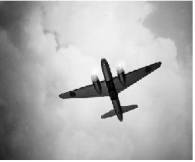
 Firing short bursts, he charged at the first Betty, still reeling and disoriented after avoiding the near collision of Butch’s dare devil dive. First one Betty fell from the sky, then another, and then another. By the time the ammunition was spent, five Japanese Bettys had crashed into the sea, and a sixth was badly damaged. Butch wasn’t finished. He rammed his Wildcat against the two surviving Bettys, doing his best to clip a wing or damage or a rudder. In the confusion of the battle, O’Hare caught friendly fire from his own carrier as well as from the enemy, but survived. Under constant harassment from Butch, the two remaining enemy planes released their bomb loads at the Lexington and missed. Humiliated and demoralized, the Japanese planes withdrew. There just wasn’t enough room in the sky for both them and Butch O’Hare. The battle had lasted just four brief minutes. His mission complete, the wounded Wildcat limped back to the carrier.
Firing short bursts, he charged at the first Betty, still reeling and disoriented after avoiding the near collision of Butch’s dare devil dive. First one Betty fell from the sky, then another, and then another. By the time the ammunition was spent, five Japanese Bettys had crashed into the sea, and a sixth was badly damaged. Butch wasn’t finished. He rammed his Wildcat against the two surviving Bettys, doing his best to clip a wing or damage or a rudder. In the confusion of the battle, O’Hare caught friendly fire from his own carrier as well as from the enemy, but survived. Under constant harassment from Butch, the two remaining enemy planes released their bomb loads at the Lexington and missed. Humiliated and demoralized, the Japanese planes withdrew. There just wasn’t enough room in the sky for both them and Butch O’Hare. The battle had lasted just four brief minutes. His mission complete, the wounded Wildcat limped back to the carrier.
 E. J. O’Hare never realized what a champion he had fathered. Having shot down five enemy planes in his first combat mission, Butch became the first ace pilot of World War II. He was quickly returned to Washington and was promoted to the rank of Lieutenant Commander. Then in the White House, in the presence of President Roosevelt, Butch’s wife Rita decorated him with the Congressional Medal of Honor “…for conspicuous gallantry and intrepidity in aerial combat…for bravery above and beyond the call of duty.” Butch O’Hare became the first servicemen in World War II to receive the Medal of Honor, and the first aviator in history to receive the decoration.
E. J. O’Hare never realized what a champion he had fathered. Having shot down five enemy planes in his first combat mission, Butch became the first ace pilot of World War II. He was quickly returned to Washington and was promoted to the rank of Lieutenant Commander. Then in the White House, in the presence of President Roosevelt, Butch’s wife Rita decorated him with the Congressional Medal of Honor “…for conspicuous gallantry and intrepidity in aerial combat…for bravery above and beyond the call of duty.” Butch O’Hare became the first servicemen in World War II to receive the Medal of Honor, and the first aviator in history to receive the decoration.
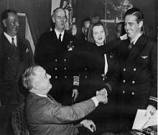
 Butch didn’t like the publicity, but he came to see it as part of the job now. He was used on recruitment posters and films. In a radio interview recounting the battle he made it sound like it was all just part of the job. Butch wanted to share the credit with all the servicemen. He said that he would rather face the Japanese again than reporters and photographers. One newspaper headline read, “Bashful Air Hero Blushes At Talk Of Achievements.” A parade was organized for him at home in St. Louis where he gave a short speech and was given the key to the city.
Butch didn’t like the publicity, but he came to see it as part of the job now. He was used on recruitment posters and films. In a radio interview recounting the battle he made it sound like it was all just part of the job. Butch wanted to share the credit with all the servicemen. He said that he would rather face the Japanese again than reporters and photographers. One newspaper headline read, “Bashful Air Hero Blushes At Talk Of Achievements.” A parade was organized for him at home in St. Louis where he gave a short speech and was given the key to the city.
 He said that what he really wanted to do was to just get back to his carrier. But Butch was too valuable to send back into combat just yet. His flight skills and knowledge of aerial combat made him invaluable as a flight instructor. He spent much of the next year and a half in Hawaii teaching aerial tactics. Many of his students who survived the war testified that tips they learned from Butch saved their lives more than once.
He said that what he really wanted to do was to just get back to his carrier. But Butch was too valuable to send back into combat just yet. His flight skills and knowledge of aerial combat made him invaluable as a flight instructor. He spent much of the next year and a half in Hawaii teaching aerial tactics. Many of his students who survived the war testified that tips they learned from Butch saved their lives more than once.
 Finally Butch returned to carrier duty in 1943, this time aboard the carrier USS Enterprise. The Japanese had developed advanced night aerial combat tactics, and Butch was given the assignment of countering those tactics by coming up with some of his own. His squadron of night fighters was nicknamed the “Black Panthers.” Radar had been installed on the torpedo bombers, which were slower but had more room for the bulky equipment. The idea was for the newer and faster Hellcat fighters to follow the radar-equipped planes who would guide them to their targets. Then, when the enemy was visible, the Hellcats would attack. Of course, in the darkness it would be much harder to distinguish between a friendly plane and the enemy, and so the danger of friendly fire was great. Butch led his Black Panther squadron to the first successful night attack. He never returned from the second. There are conflicting reports of what happened. Some say Butch was shot from behind by a Japanese Betty. Others say that in the darkness and confusion of battle he was shot from the sky by friendly fire. What we know is that America never saw its hero again.
Finally Butch returned to carrier duty in 1943, this time aboard the carrier USS Enterprise. The Japanese had developed advanced night aerial combat tactics, and Butch was given the assignment of countering those tactics by coming up with some of his own. His squadron of night fighters was nicknamed the “Black Panthers.” Radar had been installed on the torpedo bombers, which were slower but had more room for the bulky equipment. The idea was for the newer and faster Hellcat fighters to follow the radar-equipped planes who would guide them to their targets. Then, when the enemy was visible, the Hellcats would attack. Of course, in the darkness it would be much harder to distinguish between a friendly plane and the enemy, and so the danger of friendly fire was great. Butch led his Black Panther squadron to the first successful night attack. He never returned from the second. There are conflicting reports of what happened. Some say Butch was shot from behind by a Japanese Betty. Others say that in the darkness and confusion of battle he was shot from the sky by friendly fire. What we know is that America never saw its hero again.
 The nation mourned the loss of its champion, Edward Butch O’Hare, dead at the age of 29. His hometown of St. Louis tried to honor the fallen hero in ways that he would never have permitted. They tried to name a bridge and a high school after him, but his mother Selma wouldn’t allow it. She insisted that all the servicemen who fought are heroes. But the family couldn’t keep the city of Chicago from naming its new airport in his honor, O’Hare field in 1949. Later, in 1963, after the expansion of the airport was completed, President Jack F. Kennedy, in honor of Butch, rededicated O’Hare International Airport, the largest airfield in the nation, for its greatest aviation warrior and champion.
The nation mourned the loss of its champion, Edward Butch O’Hare, dead at the age of 29. His hometown of St. Louis tried to honor the fallen hero in ways that he would never have permitted. They tried to name a bridge and a high school after him, but his mother Selma wouldn’t allow it. She insisted that all the servicemen who fought are heroes. But the family couldn’t keep the city of Chicago from naming its new airport in his honor, O’Hare field in 1949. Later, in 1963, after the expansion of the airport was completed, President Jack F. Kennedy, in honor of Butch, rededicated O’Hare International Airport, the largest airfield in the nation, for its greatest aviation warrior and champion.
